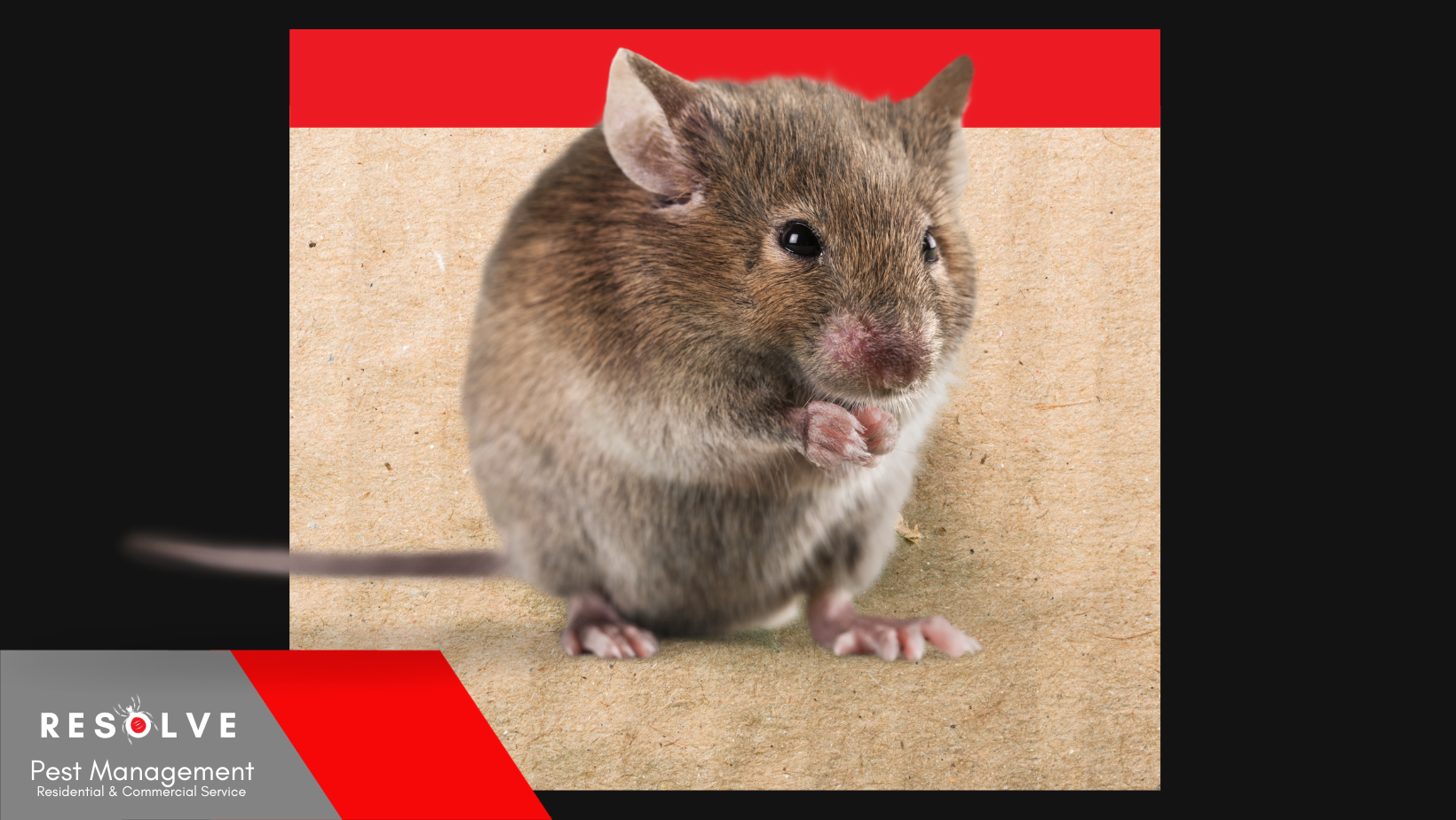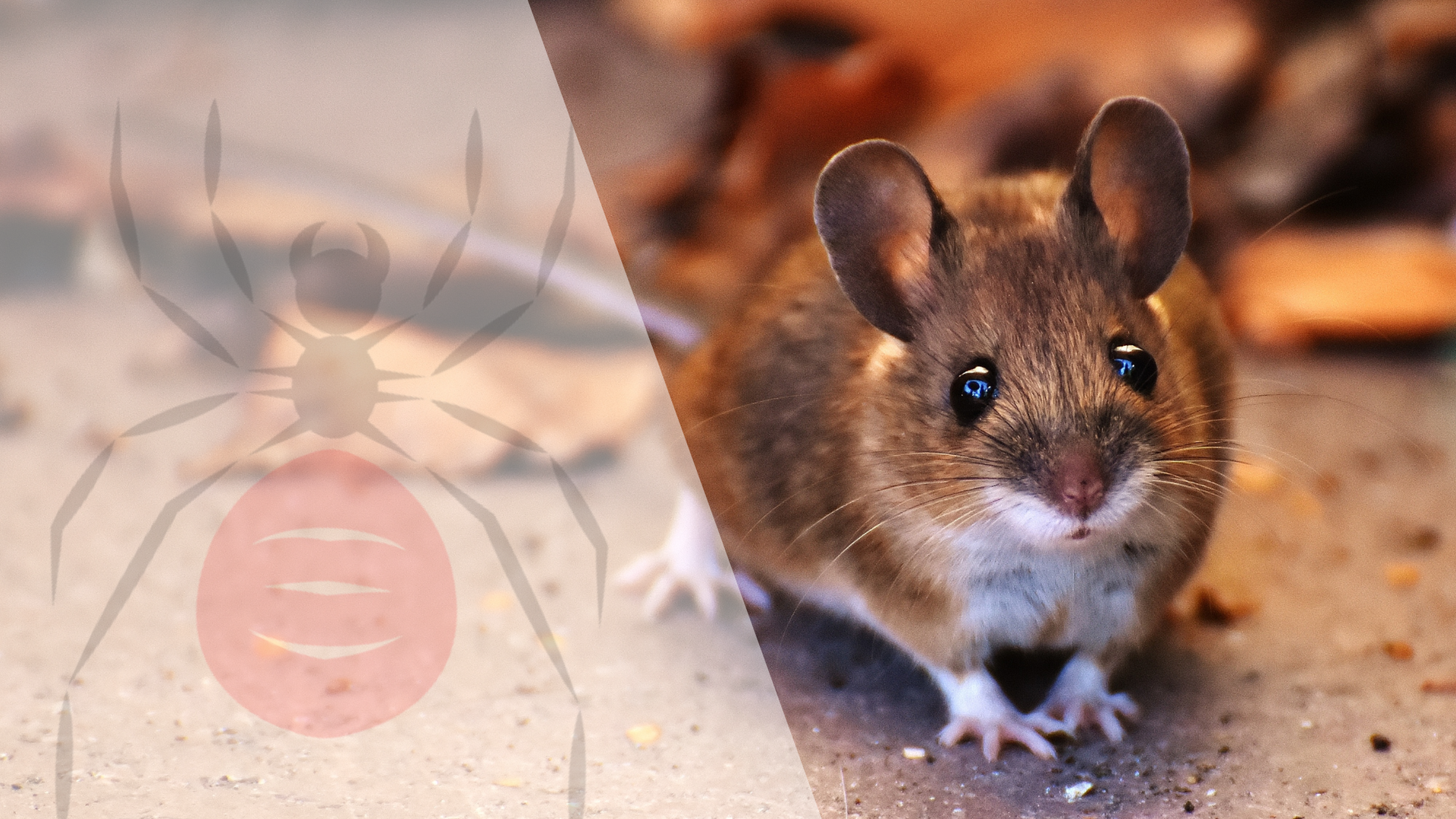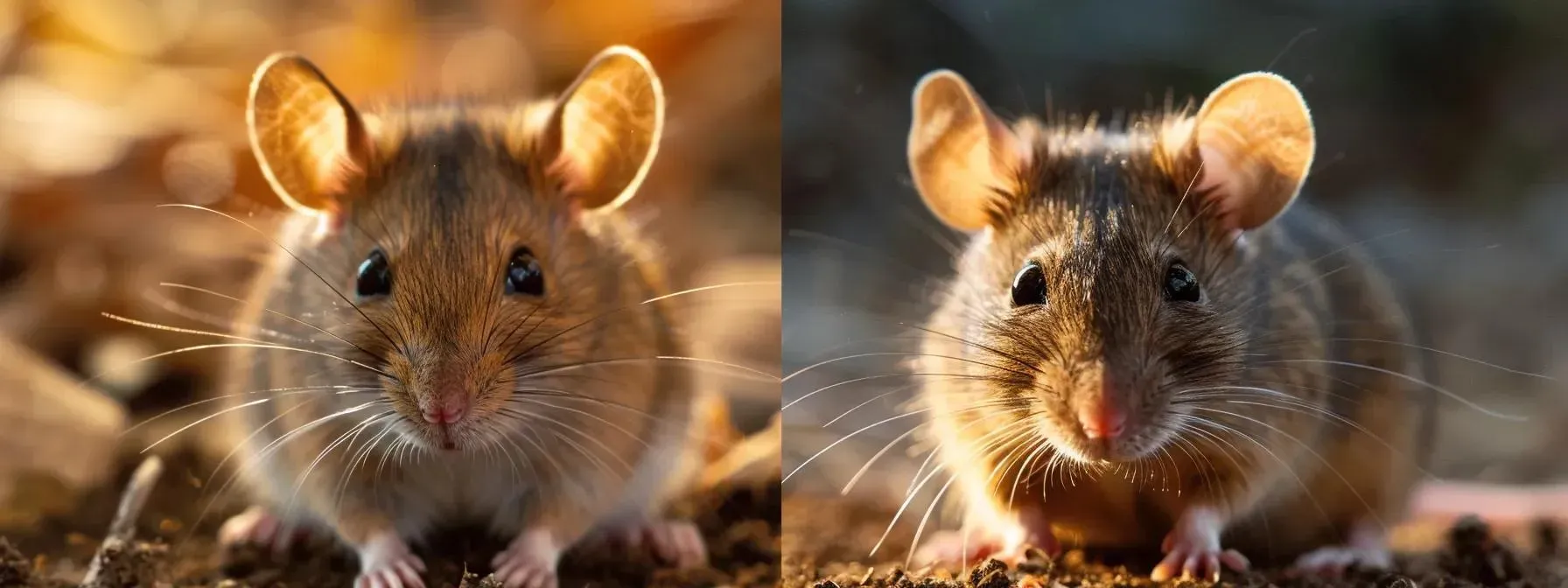A Comprehensive Guide to Mouse-Proof Your Home
Written by
Your Ultimate Guide to Safeguarding Home Sweet Home

Welcome to the battle for your home—a battle against the silent invaders that scurry in the night. Did you know that rodents alone can cause extensive damage and carry diseases transmissible to humans? In fact, according to the Center for Disease Control and Prevention (CDC), rodents are responsible for spreading illnesses such as leptospirosis, lymphocytic choriomeningitis (LCM), tularemia, and salmonellosis. Now, more than ever, it's time to fortify your living space and learn the art of pest management. This guide is your arsenal, offering strategic insights to keep your sanctuary critter-free. So, gear up, because your home is about to become a fortress against the uninvited guests.
Studies show that nearly 30% of homeowners experience rodent issues, making effective pest control crucial. This guide will walk you through essential methods for mouse-proofing your home, focusing on sanitation practices, exclusion tactics, and effective traps. By following these strategies, readers can reduce the risk of rodent infestations in areas such as the attic and diminish the likelihood of pest-related damage. With practical insights, this content directly addresses the worries of dealing with mice and empowers homeowners to reclaim their space.
Key Takeaways
- Understanding rodent behaviors is essential for effective pest management and prevention strategies
- Regular inspections help to detect potential infestations before they escalate
- Implementing sanitation measures significantly reduces food sources for unwanted pests
- Engaging with local pest control services ensures tailored solutions for specific rodent issues
- Creating a mouse-proof home enhances overall health and peace of mind for residents
Welcome to Pest Management 101!
Pest management starts with understanding the types of pests that may invade a home. Rodents, such as mice and rats, can cause significant damage and carry diseases. Recognizing the behavior of these pests is essential for effective prevention.
Alongside mice, homeowners should be aware of other threats like voles and termites. While voles may not be as notorious as rats, they can still create problems in gardens and lawns. Termites threaten the structural integrity of homes, making knowledge of various infestations vital in pest management.
Implementing simple preventive measures can help in mouse-proofing a residence. This includes sealing gaps and cracks, as well as ensuring that no food is left accessible. Keeping storage areas organized can also prevent mice and their fur from becoming a nuisance.
Regular inspections can save homeowners from extensive infestations. Checking for droppings and signs of gnawing can alert individuals before a minor issue escalates. Using traps or contacting professionals can provide additional support in maintaining a pest-free environment:
| Pest Type | Potential Damage | Preventative Measures |
|---|---|---|
| Mouse | Gnawing on wires and insulation | Seal entry points |
| Rat | Spreading disease and contaminants | Store food securely |
| Vole | Damaging plants and gardens | Avoid excess vegatation |
| Termites | Structural damage to wood | Regular inspections |
Ever had a late-night rendezvous with a mouse under the fridge? These little invaders aren't just annoying; they're carriers of diseases and potential home wreckers. According to the CDC, rodents can spread illnesses like leptospirosis and salmonellosis, turning your cozy abode into a health hazard as mentioned above.
Why Pest Control Matters
Understanding the significance of pest control is crucial in maintaining a safe and healthy home. The risk posed by silent invaders, such as the eastern deer mouse, can lead to severe problems if left unchecked. Effective trapping solutions and preventive measures ensure that these pests, along with insects and other wildlife like skunks, are kept at bay.
This section will emphasize the importance of identifying potential threats, recognizing signs of infestation, and implementing strategies to secure living spaces. By addressing these key areas, homeowners can protect their properties from the damages and health risks associated with pest invasions. Recognizing the signs of an infestation
Grab a flashlight and channel your inner detective. Look for telltale signs like rodent tracks, droppings, and chewed corners. Identifying your enemy is the first step in this pest-busting mission.
The Silent Invaders
The presence of silent invaders such as mice, squirrels, and chipmunks can pose serious threats to homes. These animals often seek out warm, dry environments for nesting, making attics and basements prime targets. Awareness of how these pests enter a property can help homeowners implement effective measures to keep them out.
Addressing the habits of these intruders is essential for successful pest management. For instance, if wood materials such as decks or fences are in disrepair, they may serve as entry points for squirrels and other rodents. Regularly inspecting these areas and securing any possible access points can significantly reduce the likelihood of a pest invasion:
| Pest Type | Behavior | Nesting Preference |
|---|---|---|
| Mouse | Gnawing through wood and insulation | Wall cavities, attics |
| Squirrel | Climbing and gnawing | Attic, trees |
| Chipmunk | Burrowing and scavenging | Gardens, under wood |
Identifying the Foe
To effectively mouse-proof a home, it is essential to inspect and detect the presence of unwanted species. Understanding whether the intruder is a mouse or a rat, such as the common peromyscus, can help tailor elimination strategies. This section will cover practical tips for recognizing signs of infestation, including burrows near plumbing and other potential entry points that may concern customers.
Cut off the critter buffet! Enclose your food stash in tight containers, and keep those kitchen surfaces crumb-free. Starving pests are easier to control.
Inspect & Detect
To effectively address mouse-proofing, individuals must first conduct thorough inspections to identify potential intruders. Key signs of infestation include droppings, gnaw marks, and tracks left by creatures such as deer mice or raccoons. Recognizing these indicators can help mitigate the spread of diseases associated with rodents and ensure a healthy living space.
Regular monitoring of areas like attics, basements, and storage spaces increases the chance of early detection. Homeowners should focus on inspecting entry points such as gaps around windows and doors, as well as plumbing access areas. Being proactive in identifying pests will reduce reliance on poison and other harmful products, promoting a safer environment for families.
| Pest Type | Signs of Infestation | Health Risks |
|---|---|---|
| Deer Mouse | Droppings, nests in hidden areas | Hantavirus |
| Raccoon | Gnaw marks, overturned trash | Rabies, leptospirosis |
| Common Rat | Gwaning on materials, urine stains | Salmonella, leptospirosis |
Mice or Rats?
Distinguishing between mice and rats is essential for effective pest management. While both are considered rodents, they exhibit different behaviors and require tailored approaches for control. For instance, if a homeowner identifies signs of infestation in the basement, such as droppings or gnaw marks, determining whether the culprit is a mouse or a rat will influence the choice of rodenticide or the need for an exterminator. Understanding these differences helps homeowners take swift action, preventing further infestations.
Common rats tend to be larger and more cautious than mice, which are typically more curious and exploratory. Recognizing these traits can help in devising preventive strategies, including securing entry points and eliminating food sources that attract wildlife. Homeowners should prioritize regular inspections and engage professionals, like those from Orkin, to ensure thorough evaluations and effective pest control measures tailored to their specific situation.
Battle Plan: Sanitation First!
Sanitation plays a vital role in effective mouse control and prevention strategies. This section will discuss the importance of maintaining a "Food Patrol" to secure food sources and examine the "Sanitation Station," where creating a clean environment aids in mouse extermination. Establishing a home protection plan that emphasizes cleanliness minimizes the risk of infestations and enhances overall home safety.
Food Patrol
Implementing a thorough "Food Patrol" can significantly reduce the likelihood of mice invading a home. Homeowners should ensure that food is stored in airtight containers, preventing easy access for rodents. Regularly cleaning kitchen surfaces and managing food waste are essential steps in any mouse pest control strategy. By minimizing food sources, the chances for survival and breeding of mice diminish, making it less likely that homeowners will require the services of a mouse exterminator.
Pest control companies emphasize the need for a proactive approach in sanitation to avert infestations. A clean environment not only deters mice but also supports overall health and hygiene in the home. Collaborating with a pest control company can provide additional insights into effective food management practices, ensuring that once mice are removed, they do not return. By prioritizing cleanliness and securing food sources, individuals can strengthen their defenses against potential rodent problems.
Sanitation Station
Establishing a "Sanitation Station" is essential for effective rodent control in any home. This area serves as a central point for maintaining cleanliness and organization, which is crucial in preventing infestations. Homeowners should ensure that food is properly sealed in airtight containers and regularly dispose of waste, making it less inviting for house mice to enter and thrive in their living space.
Regularly cleaning and inspecting the Sanitation Station allows homeowners to keep track of any signs of rodent activity. Enlisting the help of a local exterminator for mice may provide additional insights into effective sanitation practices. Additionally, setting up bait strategically around this area can help in monitoring and addressing potential mouse issues before they escalate into a full-blown infestation:
Set up your mouse traps like a pro. Learn the art of trap placement, and let these gadgets do the work. Remember, a strategically placed trap is a victorious trap!
Establishing a "Sanitation Station" is essential for effective rodent control in any home. This area serves as a central point for maintaining cleanliness and organization, which is crucial in preventing infestations. Homeowners should ensure that food is properly sealed in airtight containers and regularly dispose of waste, making it less inviting for house mice to enter and thrive in their living space.
Regularly cleaning and inspecting the Sanitation Station allows homeowners to keep track of any signs of rodent activity. Enlisting the help of a local exterminator for mice may provide additional insights into effective sanitation practices. Additionally, setting up bait strategically around this area can help in monitoring and addressing potential mouse issues before they escalate into a full-blown infestation:
What's the mice's favorite dinner? Find out and use it against them. From peanut butter to cheese, become the master chef of mouse baiting. lure them in, and let the traps do their thing.
Establishing a "Sanitation Station" is essential for effective rodent control in any home. This area serves as a central point for maintaining cleanliness and organization, which is crucial in preventing infestations. Homeowners should ensure that food is properly sealed in airtight containers and regularly dispose of waste, making it less inviting for house mice to enter and thrive in their living space.
Regularly cleaning and inspecting the Sanitation Station allows homeowners to keep track of any signs of rodent activity. Enlisting the help of a local exterminator for mice may provide additional insights into effective sanitation practices. Additionally, setting up bait strategically around this area can help in monitoring and addressing potential mouse issues before they escalate into a full-blown infestation:
| Area of Focus | Action Needed | Expected Outcome |
|---|---|---|
| Food Storage | Seal all food in airtight containers | Reduces access for rodents |
| Waste Management | Regularly dispose of garbage | Minimizes food sources for mice |
| Preventative Measures | Use bait in strategic locations | Monitors rodent activity |
Fortify Your Home: Exclusion Tactics
Effective mouse-proofing begins with sealing gaps around the home, an essential step in preventing unwanted intruders. This section will cover practical methods for closing potential entry points, as well as the importance of conducting thorough inspections to spot signs of feces or damage. Expert customer service can further assist in identifying vulnerabilities, especially when dealing with pets or other wildlife, such as opossums, that may complicate the situation.
Seal the Gaps
Sealing gaps in the home is a critical strategy in mouse-proofing efforts. Mice are notorious for squeezing through small openings, often found around pipes, windows, and doors. By sealing these entry points with materials such as caulk or steel wool, homeowners can significantly reduce the likelihood of an infestation, making it more challenging for rodents to establish a habitat. Ensuring that kitchen areas are free of gaps and openings also minimizes the chances of attracting these pests.
In addition to sealing, it is important to conduct regular inspections to identify any new vulnerabilities. For example, if gaps are overlooked, mice may leave behind traces of urine, or even droppings, indicating their presence. Homeowners may also consider placing a rat trap around potential entry points to capture any intruders. Taking action to close these openings not only helps in controlling mice but also contributes to the overall cleanliness of the home, protecting plants and other household items from damage.
| Entry Point Type | Action Needed | Expected Outcome |
|---|---|---|
| Pipes | Seal with caulk | Prevents access |
| Windows | Install weather strips | Stops air leaks and pests |
| Doors | Use door sweeps | Blocks access |
Mouse Traps & Baits
Efficient mouse control involves understanding "Trap Magic" and "Baiting Brilliance." These strategies not only address the immediate pest problem but also integrate into a larger pest management plan. Selecting traps at varying costs, using bait effectively to minimize odor, and ensuring appropriate contract services can greatly enhance a home's defenses against mice. This section will provide practical methods for implementing these techniques successfully.
Trap Magic
Choosing the right traps is crucial in executing effective pest management. Many homeowners prefer plastic traps due to their durability and ease of cleaning, which offers a practical approach to controlling mice effectively. It's essential to place traps in high-traffic areas, such as near the ceiling or along walls where rodents are likely to roam, maximizing the chances of capturing these pests. Providing information on where to set these traps can further enhance their effectiveness, leading to quicker resolutions of infestation issues.
When dealing with invasions from larger rodents, such as groundhogs, traps must be appropriately sized and strategically positioned for optimal results. Having a warranty on pest control products, including traps and baits, can offer peace of mind for homeowners, ensuring that the products will work as intended. Understanding the features of different traps helps individuals make informed decisions, allowing them to tailor their pest management strategies for a mouse-proof home.
Baiting Brilliance
Baiting is a critical aspect of effective mouse control. Selecting the right bait can enhance a trap's efficiency, which is vital for managing rodent populations that carry diseases like leptospirosis. Using food items that have a strong scent, such as peanut butter, can attract mice quickly. Homeowners should consider the length of time bait remains effective and replace it as needed to ensure consistent results, preventing mice from becoming wary of traps.
In addition to careful bait selection, placing the bait in strategic locations increases the chances of success. Mice tend to prefer areas near their nests or frequent feeding spots, such as basements and barns. Regularly monitoring bait stations not only aids in tracking activity but also helps manage litter and droppings. By implementing these baiting strategies, homeowners can significantly reduce the likelihood of infestations:
With traps set and fortifications in place, bask in the pest-free glory. Your home is now a fortress, and you, my friend, are the unsung hero of pest control.
There you have it, the ultimate DIY guide to pest control. Armed with knowledge and a dash of determination, you've turned the tables on those pesky invaders. Keep this guide handy, share it with fellow Home Heroes, and let the era of pest-free living begin. Go forth, conquer, and enjoy the harmony of a critter-free home sweet home!
Still feel unsure whether or not you can handle it on your own? Find the difference between using
DIY methods Vs. Professional Pest Control Services.
Providing NJ Quality Mouse Control That Others
Can't Give
Local Service Reliable Results!
New Jersey Mouse Control
Get Quick, Efficient Pest Control & Exterminating
When pests invade your home, waiting isn't an option. At Resolve Pest Management, we understand how urgent these situations can be. That’s why we offer 24-hour emergency pest control services to residents in Lacey, NJ and Bayville, NJ. Whether it’s rodents, insects, or wildlife, our expert team is available day or night to protect your home and restore your peace of mind.
Our treatments are family and pet-friendly, ensuring that your loved ones—including the furry ones—are safe during and after service. We know your time is valuable, which is why we provide rapid scheduling, getting you the help you need, right when you need it.
If you're dealing with a pest emergency, don’t wait! Contact Resolve Pest Management today for immediate assistance. We're here to help make your home pest-free and comfortable again.
24-Hour Emergency Pest Control
We know pests can strike at any time- day or night. Resolve Pest Management is here to help 24 hours a day.

Family & Pet-Friendly Treatments
Protecting loved ones- furry or not is our #1 priority. We use pet-friendly treatments to give peace of mind.

Testimonials
"Resolve Pest Management is absolutely wonderful. Carlos and his team do thorough work and will put your mind at ease. They explain everything that needs to be done or what they suggest should be done. When we first called, Carlos showed up and checked every area of the house. Not only did he handle the mouse issue, he also found termite damage that was unknown to us. Since then, we have regular maintenance and have even called them other issues like bees. The receptionist is also very professional and kind, working with our availability. My family and I highly recommend Resolve Pest Management."
Tonianne D.
Barnegat Township NJ
Get on Schedule Today







